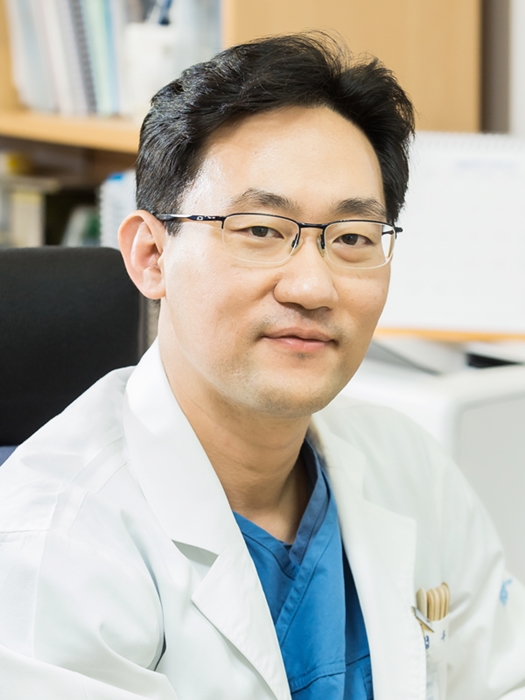[AUG. 2023] Seoul National University Bundang Hospital, Analysis of Learning Curve...
- Name 관리자
- Date 2023-08-07
Seoul National University Bundang Hospital, Analysis of Learning Curve in Thyroid Robotic Surgery Using Thyroarytenoid Approach Reveals Significant Reduction in Surgical Time After 15 Cases

Seoul National University Bundang Hospital’s Professor Jeong Woo-jin and his research team from the Department of Otorhinolaryngology announced on July 18 that they have analyzed the learning curve of the retroauricular approach in thyroid robotic surgery and presented their findings. Through numerous surgical experiences, it was revealed that the surgical time was significantly reduced after 15 surgeries.
Robotic surgery has become a crucial method in various areas due to its advantages, including a 10x magnified 3D view for precise movement of robotic arms in tight spaces and the ability to minimize scarring. It proves particularly beneficial in cases of tumors occurring in complex and vital organs in the neck area, such as the thyroid, salivary glands, nerves, and brain vessels.
For thyroid robotic surgery, retroauricular, transbreast-axillary, transaxillary, and transoral approaches can be attempted depending on the incision sites. Among them, retroauricular approach involves making an incision near the back of the ear, close to the occiput, to access the tumor. As the incision follows the hairline, the scar is almost invisible and, if it does remain, it is easily concealed by the ear and hair, presenting an advantage.
Unlike other approaches that require extensive dissection and exposure of broad areas, such as the chest muscles and armpits, the retroauricular approach allows for direct dissection and exposure only of the neck area. This results in a shorter distance to the thyroid from the incision line, and a smaller manipulation provides sufficient visibility. As a result, the surgery time is reduced, and complications and pain are minimized.

From 2018 to 2021, Professor Jeong Woo-jin’s team at Seoul National University Bundang Hospital analyzed data from patients who underwent thyroid robotic surgery using the retroauricular approach and evaluated the learning curve using cumulative sum analysis. When dividing the learning curve into two phases (first 15 cases and the rest), the total surgical time was significantly shorter in the latter phase.
In other words, it was confirmed that the time required for surgery sharply decreased after the 15th procedure. Particularly, the console operation time and docking time of the robot significantly decreased. This was attributed to the efficient use of all four robot arms while improving docking methods, adjusting the angles and positions of the robot arms, thereby minimizing collisions between them during surgery.
Professor Jeong expressed his satisfaction, stating, “Through this research, we can objectively present the stability and usefulness of the retroauricular approach in thyroid robotic surgery to medical professionals worldwide.” He further added, “I am delighted to share our expertise with medical professionals in search of information about efficient thyroid cancer surgical methods.”
It is worth noting that Professor Jeong’s team has been performing transoral endoscopic surgery through the retroauricular approach for head and neck tumors, including thyroid cancer, since 2012. From 2018, they have been conducting robotic surgery using the same approach. The retroauricular approach can be applied not only to thyroid tumors but also to various head and neck tumors, including salivary glands. As a result, it has been gaining recognition in the field of head and neck surgery, and the number of cases is rapidly increasing. The research paper was recently published in the international journal “Gland Surgery.”
HOMEPAGE: https://www.snubh.org/dh/en